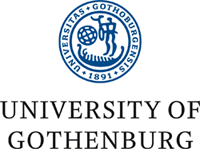The Native: Studenten (graduation from upper-secondary school)
2011-05-24. Published in Language & Culture
by Nils Pasi
 Youths loudly singing on the backs of open-sided lorries ought to belong to the more unusual sights, and for most of the year it does. But through the end of May and up until maybe the middle of June every year, it is actually not that uncommon. This is due to what is known as 'studenten' in Sweden, the graduation from upper-secondary school(1) when a person goes from being an upper-secondary school student to becoming eligible to enter University.
Youths loudly singing on the backs of open-sided lorries ought to belong to the more unusual sights, and for most of the year it does. But through the end of May and up until maybe the middle of June every year, it is actually not that uncommon. This is due to what is known as 'studenten' in Sweden, the graduation from upper-secondary school(1) when a person goes from being an upper-secondary school student to becoming eligible to enter University.
In Sweden, students at primary and secondary schools are commonly called 'elever' (pupils), and not until you have 'tagit studenten', i.e. graduated from upper-secondary school, do you become a 'student' (person who has graduated from upper-secondary school. In the past, it used to be even more complicated, as you would not immediately become a 'student' after graduating. Instead, you would be a 'kandidat' (candidate) between graduation and the time when you enrolled in University studies, at which point you would become a 'student' (student at an institution for higher learning). Maybe that is why the Swedish word 'student' nowadays can refer both to someone who has graduated from upper-secondary school, and to someone who is studying at a place of higher learning, such as a University or Högskola(2).
Up until 1968, graduation from upper-secondary school in Sweden included taking a final graduation exam which would make student eligible to apply for continued studies at an institution for higher learning. It was customary for those who passed the exam to go out partying afterwards. However, the final graduation exam was removed in 1968 in favour of 'avgångsbetyg', a paper which contains the grades received in all courses taken at upper-secondary school. Based upon the grades in several key courses such as Swedish, Mathematics, English and so on, an overall score is calculated. It is this score that is often used when applying for studies at institutions of higher education, and when there are more applicants than there is room for in a course, the applicants with the higher scores are accepted. This graduation certificate is thus certainly very important, and although the partying between 1968 and end of the 1980's was not as heavy as it was before, it intensified once more during the 1990's and is now once more an important part the graduation from upper-secondary school.
A traditional graduation day
'Studenten' (graduation from upper-secondary school) commonly begins with a champagne breakfast before school begins. At school, although maybe the specifics may vary from school to school, the students receive their graduation certificates form their head teacher or the principle. Afterwards, and often after having said goodbye to the teachers, it is time for 'utspringet', a tradition with its roots in the final graduation examination of old. When the exam finished, the doors leading out of the school would open and the students would come running out of the building and into the open school yard where parents would be waiting for them. Although there is no longer an exam to keep the students inside the school until a certain time, the tradition to run out of the school building to waiting parents, family and friends has persisted over the years and is now a deeply rooted tradition.
Other traditions include the placards carried by the parents waiting in the school courtyard for the students to come running out of the building. The placard will have the name and a picture of the student when she/he was much younger, oftentimes a baby or toddler. It is customary to bring flowers to the graduates at the 'utspringet'.
After 'utspringet', it is customary to tour the city and show to the world that you have graduated. Often, this is done on the backs of open-sided lorries, often decorated with balloons and branches from birch trees. This tour is many times followed by a reception at home, when friends and family enjoy some time together. It is not uncommon for the student to attend several such receptions –not only her/his own, but also that of many friends who also graduated on the same day. A student party for the newly graduated typically ends the day.
It is tradition to send 'thank you' cards to everyone who showed up to celebrate on the day of graduation. The 'thank you' card typically includes a picture of the student taken on the graduation day. It is also customary to attend a graduation ball. At these balls, all students who graduated from a certain school are invited. In larger cities, such as Gothenburg and Stockholm, where there are many upper-secondary schools, business for party organisers should be quite good and finding venues for the graduation ball could be difficult unless organised well in advance. Here in Gothenburg, as a result, you will see often see you Swedes in tails, tuxedoes, suits and the most elaborate and gorgeous looking dresses imaginable during late May and throughout June.
[caption id="attachment_2079" align="alignleft" width="200" caption="Student wearing the traditional, white graduation cap. Photo taken on Valborg, 2009."]
 [/caption]
[/caption]The 'studentmössa' (student cap)
Of course, another tradition worth mentioning is the 'studentmössa', the white cap worn by the graduates on the graduation day. The 'studentmössa' is also worn every year on Valborg by people who have graduated from upper-secondary school. Although most people who graduate get one of these caps, it is actually not provided free of charge. Indeed, the cap can be quite expensive, often costing in the range of 500 SEK. Often, but not always, a coloured ribbon on the base of the cap denotes the principle field of study the student pursued at upper-secondary school, for instance social sciences or natural sciences, or something else. On graduation day, it is customary for class mates and friends from other graduating classes at the school to sign the insides of the caps, as well as write some words of remembrance or a good luck wish for the future.
The songs of graduation
Traditionally, 'studentsången' ('student song' or 'graduation song') is sung by the students graduating from upper-secondary school. Prince Gustaf (Frans Gustaf Oscar, 1827-1852), also known as 'sångarprinsen' (the singer prince) wrote the music and asked an acquaintance of his, Herman Sätherberg, to write the lyrics. The result was 'studentsången', which was composed for male choir and was first performed at a spring concert in 1852. Apart from being sung on the graduation day, student choirs perform it every year at Valborg. Among the notable recordings of the song is the 1938 recording by Swedish tenor Jussi Björling, still considered to have been one of the worlds greatest operatic tenors ever.
Lyrics (my translation, so please take it for what it is):
Sjungom studentens lyckliga dag
(Let us) Sing about the happy day of graduation
låtom oss fröjdas i ungdomens vår!
let us delight in the spring of youth!
Än klappar hjärtat med friska slag
The heart yet beats with steady beats
och den ljusnande framtid är vår.
and the brightening future is ours.
Inga stormar än i våra sinnen bo
No storms yet harbour in our minds
hoppet är vår vän, och vi dess löften tro,
hope is our friend, we believe in its promises,
när vi knyta förbund i den lund
when we (form a union?) in the grove
där de härliga lagrarna gro,
where the wonderful laurels grow
där de härliga lagrarna gro,
where the wonderful laurels grow
Hurra!
Hurrah!
My performance of 'studentsången':
Today it is not uncommon to hear another graduation 'song' as well. In fact, this one is much more common today, than is the 'studentsången'. The music is apparently adopted from the French song 'Marlbrough s'en va-t-en guerre', and the Swedish lyrics are perhaps rather simple:
'För vi har tagit studenten, for vi har tagit studenten, for vi har tagit studenten! Fy fan vad vi är bra.' For we have graduated [from upper-secondary school], for we have graduated, for we have graduated! Damn, how good we are!
Notes:
1) The Swedish school system consists of: 'Grundskolan' (primary school, comprising elementary school and lower secondary school/junior high-school – ages 6-15), 'Gymnasiet' (upper-secondary school or senior high-school, ages 16-18), and 'Universitet och Högskolor' (University).
2) Högskola – much like a University, but without the right to carry out research.
/Nils, Misi.se team 2011


